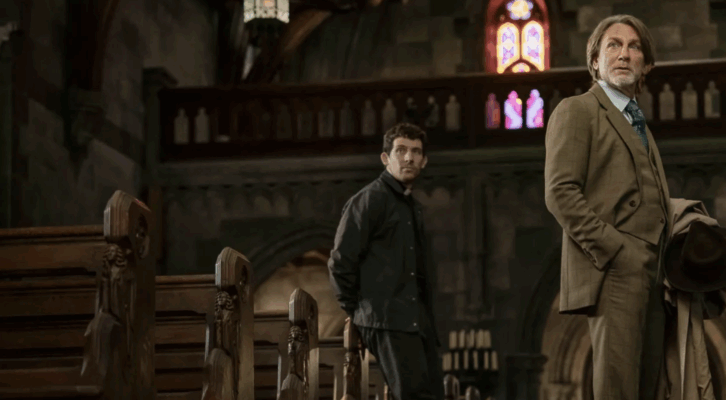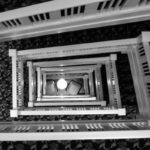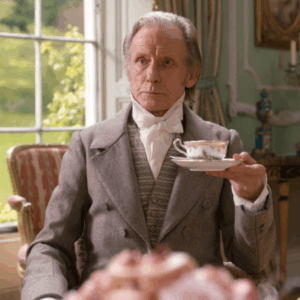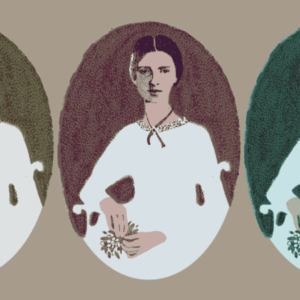
Melissa Broder on Jennifer Dawson’s Forgotten 1961 Classic The Ha-Ha
“The absurdity of existence, the often-simultaneous humor and terror in not knowing what life is for, is a theme echoed throughout the novel.”
In The Ha-Ha, Jennifer Dawson relies on her own history as a patient in a psychiatric hospital to tell the story of Josephine Traughton, a young woman who suffers a breakdown while studying at Oxford in the 1950s and is institutionalized at a hospital in the English countryside.
Like Josephine, Dawson spent six months at Warneford Hospital in Oxford following a breakdown during her third year at St. Anne’s College. Josephine meets a fellow patient, the neurotic Alasdair Faber, while reclining in a ha-ha (which is, according to Google AI, “a turfed ditch used to keep grazing livestock out of a garden or estate”). Alasdair reveals to her, for the first time, that her diagnosis is schizophrenia. He is an odd messenger of this information—no doctor or nurse has explained Josephine’s diagnosis to her directly. Still, the two form a friendship that ultimately turns romantic.
While their romance serves as a catalyst for her self-realization, it is Josephine’s experience of schizophrenia in English society, where she feels she does not have the “knack of existing,” that lends this novel its spiritual and existential depth. What is so miraculous about The Ha-Ha—Dawson’s first novel, published in 1961—is not only the range of religious and philosophical concepts it touches but the way that Dawson concretely externalizes these interior experiences.
The Ha-Ha can be read through lenses of Christian mysticism, absurdism, existentialism, or the Zen Buddhist conception of present-moment awareness as enlightenment.
The relationship between mental illness and spirituality is a challenging subject to navigate, as both mental health conditions and spiritual beliefs are deeply personal. Schizophrenics at times experience altered perceptions of reality, such as visual and auditory hallucinations. But when seen in the context of mysticism, these alternate states of consciousness may be framed as transcendental awakenings, or even as communications with the divine. Ultimately, it is up to the individual to define her experience for herself.
The Ha-Ha can be read through lenses of Christian mysticism, absurdism, existentialism, or the Zen Buddhist conception of present-moment awareness as enlightenment. As the novel nears its climax, Josephine has an epiphanic moment in which she says, “I heard the voice outside more clearly. It was calling me distinctly…The colours broke out in radiance…and I knew that God was there.”
Josephine’s God of enlightenment and mystery is not a traditional Christian God. The nuns who serve at the psychiatric hospital define health as a progression toward the earthly world rather than toward the heavenly: a return to the world of friendships and parties where Josephine has felt alien and isolated. Likewise, the Bible once read by Josephine’s mother leaves her cold. She says: “‘The foxes have holes . . . and the birds have their nests, but the son of man . . . ’ This suddenly seemed to be wrong.”
Yet Josephine has beatific visions while sitting on the hill with a fellow female patient she calls “Judas Iscariot.” She experiences divine revelation when Alasdair takes her to the River Severn—the river being a Christian symbol of renewal, cleansing, healing, and transformation. Like the mystic Saint Francis, Josephine has a kinship with animals, though her beasts are hallucinated: kangaroos, butterflies, snakes, armadillos, and gazelles. It is, in part, her visions of these animals at an Oxford party that result in her being institutionalized.
The absurdity of existence, the often-simultaneous humor and terror in not knowing what life is for, is a theme echoed repeatedly throughout the novel.
One reason for Josephine’s entry into treatment is her seemingly inappropriate fits of laughter: at parties, where nothing appears to be funny, and in quieter spaces like her hospital room. When she explains this to Alasdair the first time that she meets him in the ha-ha, he asks why she laughed so much about the “gruesome” human condition. “I don’t know,” she says. “Just that it seemed so funny being alive at all.”
The absurdity of existence, the often-simultaneous humor and terror in not knowing what life is for, is a theme echoed repeatedly throughout the novel. Sometimes, Josephine’s feet are too light, “like paper,” and nothing can tell her that she exists. She ponders the precarity of a room and wonders what supports it. At a party she is encouraged to attend, heads are “moving and twisting, mouths opening and shutting,” and “[n]o one seemed to think it was at all a surprising situation to be in.”
Josephine’s experience of alienation and strangeness recalls a quote from existentialist writer Albert Camus: “At any street corner the feeling of absurdity can strike any man in the face.” In the vein of Jean-Paul Sartre’s play Les Mouches, Josephine declares that human beings are nothing but flies. “You are . . . always preoccupied with grand cosmological things-as-a-whole. You’re so existential,” says Alasdair. Of her schizophrenia, he says, “It’s only one way of saying that you are more real than most people, more involved in the fundamentals of existence.”
She dwells in the mystery of life, which she describes as the “chanceyness” of it all.
Josephine’s engagement with these fundamentals of existence, her deep immersion in the present moment, is reminiscent of the Zen Buddhist ideal of enlightenment as in the here-and-now. “How well I remember that first night!” she says of checking into the psychiatric hospital. “It was all so clear then, as though I had woken after a dream to see a dazzling light on the ceiling. . . . I was already awakened and free, and the rest did not seem a matter of importance at all.” She exists in a sort of naked consciousness, unable to follow social rules or to play games. She eschews labels, even down to her own name, which she states she “never was.” She dwells in the mystery of life, which she describes as the “chanceyness” of it all.
With a natural tendency toward non-attachment, she is always aware of our ephemerality. As the novel progresses, Alasdair’s presence, and the affection that Josephine feels toward him, appears to be an anchor within the fragility of her reality. She feels supported by him, physically and psychologically. He teaches her to frame her illness as something special, rather than as a liability.
Yet ultimately, earthly love is also rendered ephemeral. “I only wanted to walk up the hill . . . ,” she says, “and capture what it was that had slipped through my fingers—whether it was love or whether it was only physical closeness and warmth that had kept this lightness out.” What Josephine mistakes for Alasdair’s voice proves, instead, to be the voice of God, and the anchor that she perceived in him she must find in her own self.
In her 1985 afterword to The Ha-Ha, Jennifer Dawson explores its sociopolitical and feminist implications, rather than religious or philosophical themes. She conveys a reverence for the “genuine questions” about patients’ rights advocated by the New Left during the mid-1960s and early 1970s. Simultaneously, she expresses antipathy toward the hijacking by “political looters” of the British Mental Health Act of 1959, who manipulated the liberalism of the act to create new economic development areas through “psychiatric ‘slum clearance.’”
But the nature of literature, in itself, does not need to take a position on one side or another of an issue. Literature is experiential, literature is personal, and Jennifer Dawson’s The Ha-Ha, which displays her rare ability to legibly and vividly convey the interior workings of a very unique mind and spirit, is a magnificent literary experience.
__________________________________

Excerpted from The Ha-Ha by Jennifer Dawson. Copyright © 1961 by Jennifer Dawson. Introduction copyright © 2025 by Melissa Broder. Reprinted with permission of Scribner, a Division of Simon & Schuster.
Melissa Broder
Melissa Broder is the author of the novels Death Valley, Milk Fed, and The Pisces, the essay collection So Sad Today, and five poetry collections, including Superdoom: Selected Poems. Her books are translated in over ten languages. She lives in Los Angeles.



















